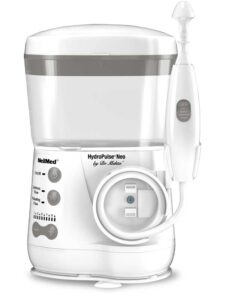How to be Free of Sinus and Allergy Permanently Book contnued
Why Do We Have Sinuses?
The most common question a patient in pain will ask me is, “Why do we have sinuses?” No, they weren’t put in your head just to give business to the doctors. Sinuses are hollow spaces that are roughly below, above, and in between the eyes. One theory is that they are located in this manner because the eyes have to be spaced a certain distance apart in order to get binocular vision. The ears have to be spaced in a certain position to get the best information about the direction and interpretation of sounds.
After positioning these organs in the best possible location, allowing for the size of the brain, and allowing for some strong support for the jaws in order to bite and fight, we pretty much come up with approximately the size and shape of our head. The sinuses are the hollowed spaces in the facial bones, which, if they were filled with bone, would cause the head to be three times as heavy as it is. We’d need a totally different type of neck and support muscles for such a heavy head; therefore, the facial bones are left with hollow spaces to lighten the weight of the head. Those hollow spaces are our sinuses.
There is a theory that the head enlarged for the larger brain and the sinuses accommodated to the larger size. Another theory is that the sinuses aid in the voice quality and sounds so that the better sinuses were a survival tool. You could identify your friend from foe by his “voice.”
Actually, sinuses don’t just sit there. They provide moisture and warmth for air as it goes through the nose to the lungs. If air going to the lungs isn’t moisturized, then the minute hair cells of the lung passages are left dry and weak. That affects an important healthful activity of such cells, an activity by minute hair cells, called cilia, that defend the body.
Why Do People Get Sinus Diseases?
A common cause of sinus disease is the act of blowing the nose too hard. Excessive blowing irritates the nose in the same manner as rubbing the eyes too hard—eye-rubbing damages the delicate eye membranes, and blowing hard can damage nasal membranes. Often, the bigger the man, the harder he blows.
By simply teaching a person not to blow—or to blow very, very gently—the sinus problem is often prevented. What is the correct way of blowing the nose? Gently! Indeed, the less blowing, the better. With heavy blowing, pus is forced from the nose into otherwise healthy sinuses and into the ear. If you must blow, do it with both sides of the nose open, very gently, into a tissue. Good parents teach their children to blow gently or not at all. Note: Tissues should be placed in a sealable bag. Tissues left open can result in spreading virus and bacteria to the family.
Sinus disease can be caused by exposure to various chemicals, such as sulfur dioxide, paint sprays, solvents, etc. (See the list of such chemicals in the discussion of mucociliary clearance.) If you have frequent exposure to any of these chemicals, or have had a few intensive exposures and you have nasal and other difficulties, the cause of your problem may be such chemical exposure. Sometimes, rinsing these chemicals out of the nose once a day is all you need!
There are anatomical causes of sinus disease. The nose may have been traumatized and the bones and cartilage block sinus drainage.
A cause of chronic sinus disease today is Empty Nose Syndrome. Here the nasal turbinates that provide moisture and cilia function have been removed and there is no cilia to defend against infection.
In my practice, I see two groups of sinus disease. One group has acute sinusitis—these patients do fully recover from their sickness, usually after no more than one month of treatment. The other group has chronic sinusitis—these patients have had sinus symptoms for many weeks, months, or even years! Let’s discuss each separately.
Acute Sinusitis
Consider this patient example:
R.J., age twenty-seven. In January, after a snowball fight, R.J. went hiking while his clothes were wet. That night, his nose clogged. Next morning, his nose was blocked, and he had pain in the area above his teeth. He had a fever. He had acute sinusitis.
In acute sinusitis there is sinus pain, nasal congestion, and fever, and the patient feels sick. Symptoms may resemble the flu or a bad cold, with weakness and aching. The doctor sees red, inflamed nasal tissue.
If the correct treatment is used, a patient may get over this infection rather quickly. At the end of the infection, there is a great deal of yellow or green material in the nose that can be removed by irrigation.
Essentially, in acute sinusitis you get over the attack fully, but it might take a month, and then you are clear. If we take an X-ray at the start of the associated blockage, fever, and pain, we generally see fluid in the sinus cavity, the sinus membranes are swollen, and there is severe swelling at the opening of the sinus cavities. If we take a repeat X-ray later, the sinuses will be free of fluid, the swollen membranes will be back to normal, and the openings no longer will be swollen and blocked.



You must be logged in to post a comment.